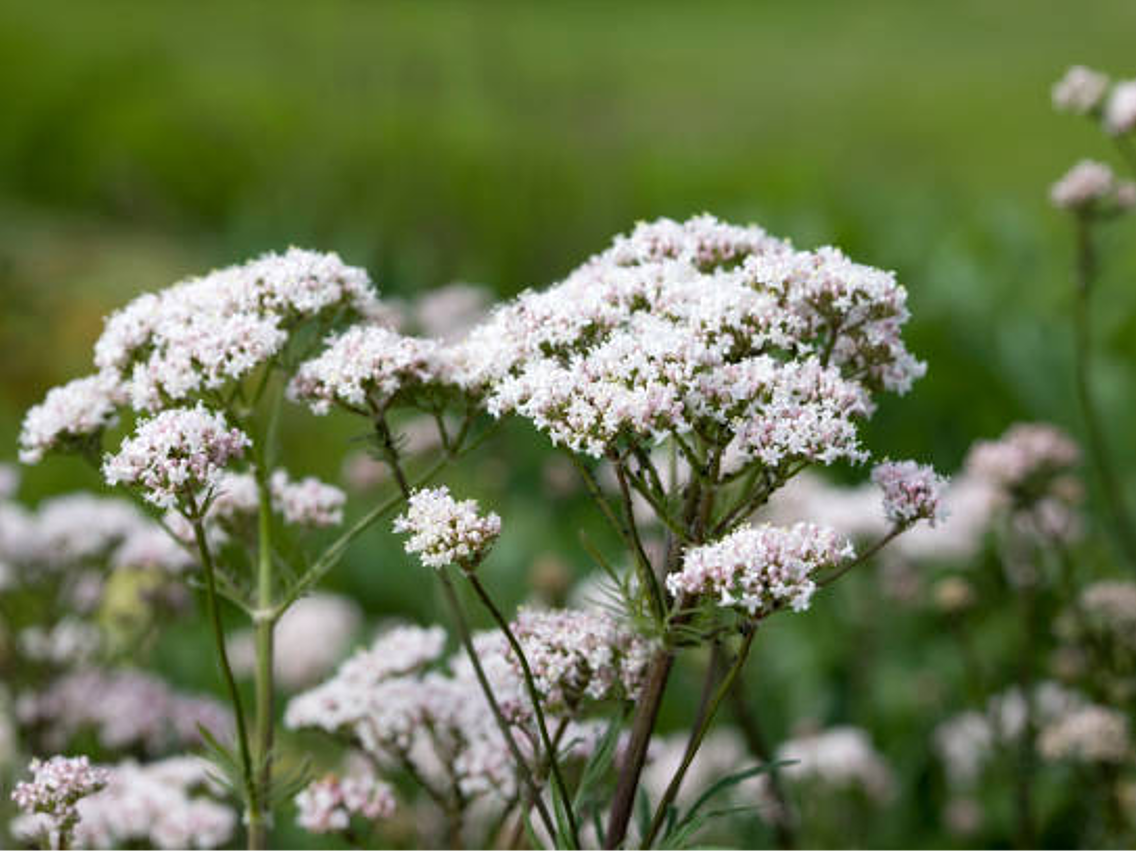Valerian - Valeriana officinalis

Common Names: Baldrian, Devil's herb, Cat's root, All-heal, Valerian, Valeriana officinalis, global, English, Latin, medicinal valerian
Latin Name: Valeriana officinalis
Origin: Asia, Europe, South America, North America
Short Introduction
The plant naturally thrives in moist environments such as woodlands, wetlands, and meadows. It can be easily grown at home, provided that water and humidity levels are adequately maintained.
Detailed Description
Valerian is a traditional medicinal herb recognized for its calming and sleep-supporting benefits, widely used in Europe and beyond.
Botanical Information
Valerian is a perennial herb reaching about 1 meter in height. Its hollow, grooved stems support opposite, pinnate leaves that are lanceolate and lobed. The plant produces clusters of pinkish-white flowers arranged in corymb-like inflorescences. The fruit is an achene, and the rhizome is short, with numerous rootlets.
Origin and Distribution
Valerian is native to Europe, with a more limited origin in Asia, and has since been introduced to the Americas. It naturally occurs in damp environments—forests, wetlands, and grasslands across these regions.
Usage / Dosage
The root of Valerian contains compounds such as valeric acid, isovaleric acid, and actinidine, which are particularly attractive to cats—an effect that is used for products aimed at pet owners. Valerian tinctures are sometimes used to soothe cats in new environments or among groups of animals.
Valerian tinctures have been known and used since the Middle Ages, and tea blends containing Valerian were prescribed by Hippocrates himself. Its classic use in traditional (herbal) and home-based remedies focuses on addressing insomnia and difficulty falling asleep.
The European Medicines Agency recognizes that Valerian root may function as a natural product for relieving mild mental stress and aiding sleep. In the United States, Valerian is used chiefly for sleep issues, while in Europe it is more often taken to calm stress, tremors, and anxiety.
Clinical studies show the benefit of Valerian root extract for insomnia associated with prolonged sleep latency (difficulty falling asleep). Notably, extracts of 400 mg and 900 mg doses were comparably effective, and a 2011 article in The Journal of Supportive Oncology reported significant improvement in insomnia (compared to placebo) in oncology patients using a 450 mg extract, without any observed adverse effects.
The active acids in Valerian root, together with sesquiterpenes, bind to and modulate GABA receptors, accounting for its sedative, antispasmodic, and analgesic (pain-relieving) effects. Its antispasmodic action is thought to work similarly to sodium valproate, a propyl analogue of valeric acid. Some sources report that the hypnotic (sleep-promoting) benefits of Valerian may require up to 4 weeks of regular use to reach full effect.
Other major active constituents of Valerian root include valenol, valepotriates, and several alkaloids, which may help relieve symptoms like leg cramps, headaches, restlessness, stress, stomach cramps, and feelings of fear. Recent studies suggest an emerging role for Valerian extract in calming nervousness and improving sleep in children.
Initial evidence indicates that combining Valerian root with St. John’s Wort may support depression relief, and Valerian alone may help decrease painkiller use for menstrual discomfort. Combined herbal preparations including Valerian are also noted to assist with restlessness.
Folk Medicine
Valerian's calming properties make it a staple in many herbal tea blends for sleep problems and depression. In folk medicine, it is regularly used (with no reported adverse effects) for anxiety, depression, restlessness, stress, epilepsy, menstrual pain, headaches, chronic fatigue syndrome, stomach pains, and for children with ADHD.
Homeopathy
Valerian was used in the preparation of the very first homeopathic medicine.
Active Compounds
The root and rhizome are the therapeutically valuable parts of the plant. They contain a complex mixture—primarily alkaloids (actinidine, valerin, valerianine), isovaleramide, gamma-aminobutyric acid (GABA), isovaleric acid, and various compounds that exert calming effects on both central and peripheral nervous systems, accounting for its muscle-relaxant actions. Unlike older sleeping medications, Valerian does not induce dependency. Overdose (around 20 g of pure extract) may cause fatigue, cramps, and headaches, all of which resolve within 24 hours.
Traditional Dosage
Prepare an infusion by steeping one teaspoon of dried Valerian root in 250 ml of hot water for 10 minutes. Note that a characteristic odor may be apparent. In any form, Valerian is best used 30 to 60 minutes before bedtime; it’s important to also maintain good sleep hygiene for best results. Capsules or tablets with 400–900 mg of extract (alcoholic or oil-based) taken 30–120 minutes before sleep have also demonstrated satisfying effects.


